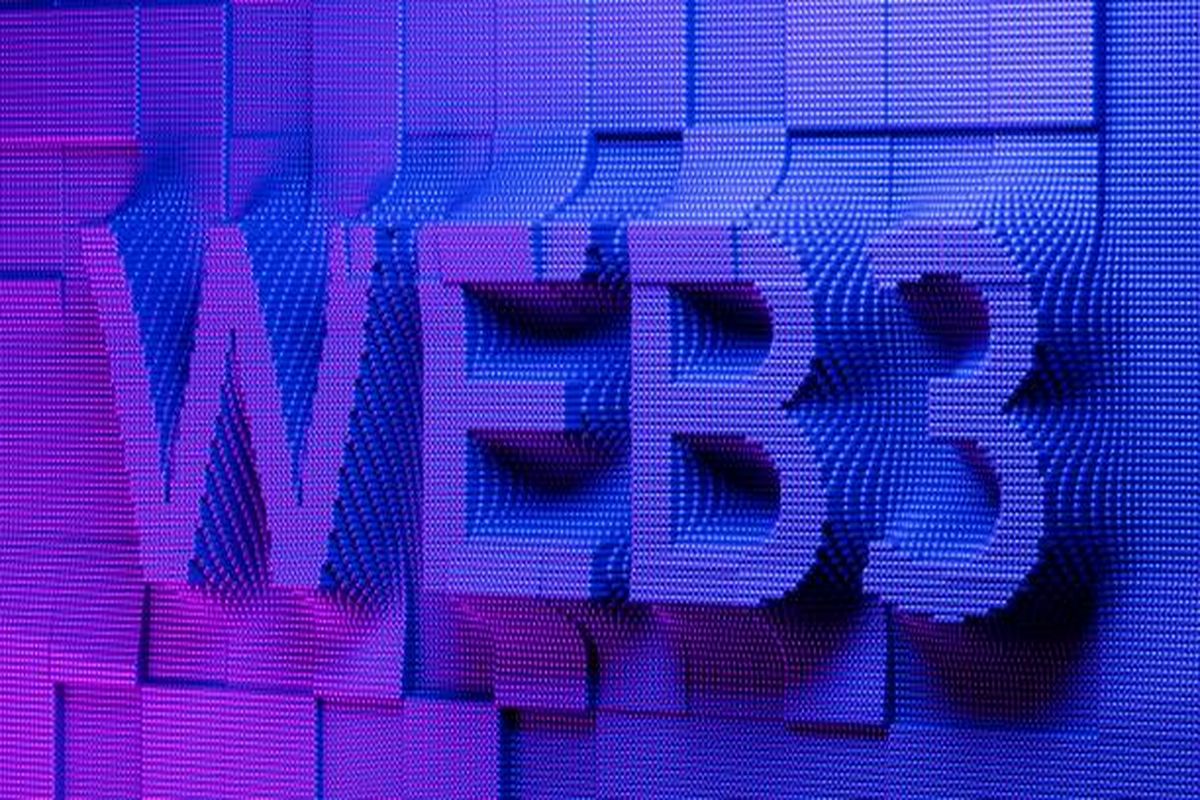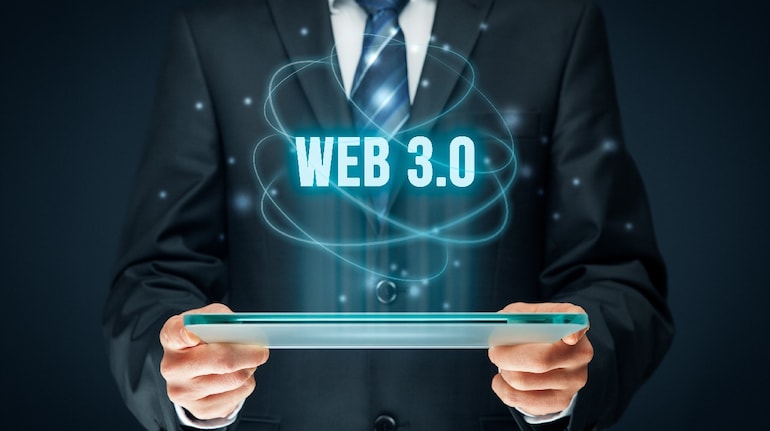Blockchain is the important technology that underpins the decentralized web (Web3) and changes an integral dynamic of the current version of the web, where businesses collect as much data as possible from consumers.
Blockchain-powered tokens together with shared ownership address the primary challenge affecting the centralized networks: value is accrued by a single organization, which then is seen to conflict with its stakeholders. But, data independence is assured by Web3 dApps through using blockchain technology.
The internet has evolved extensively from the ‘read-only’ Web 1.0 to the current Web 2.0, which is mostly defined as participatory and social-driven. Now, the world is slowly moving toward the next phase of the internet, Web 3.0, mostly styled Web3 in the digital asset space.
Web3 holds the promise of enabling people to own things digitally, transact online easily, and have added control of their personal data. Crypto and blockchain ecosystems already have some working products suitable for Web3. For instance, users can make peer-to-peer payments and collect some digital items with crypto wallets. Most blockchain-based projects are decentralized by design and enable everyone to use them.
Because of decentralization, users become the paramount content owners since no centralized authority validates or collects data. Moreover, decentralized applications (dApps) are changing the paradigms of community engagements and governance by letting users vote and propose ideas, offering everybody an equal chance to participate in the implementation of a project.
Related: BendDAO (BEND): The Protocol For Web3 Data Liquidity
In that context, blockchain supports the development of crypto domains, like .eth, .crypto, and .dao. A decentralized cryptocurrency domain substitutes a human-readable address for a user’s crypto wallet for an IP address, and all these Web3 domain names can be readily traded as nonfungible tokens on NFT marketplaces.
A decentralized domain name that represents a blockchain address is mainly desirable since it is a simple-to-remember address for receiving and sending crypto, resembling an email address.
Are Crypto And Blockchain Essential For Web3?
Blockchain and cryptos are the building blocks of Web3. Nonetheless, the decentralized web also heavily relies on technologies like VR, AR, IoT, and others that are unrelated to blockchain and digital currencies.
The third generation of the internet also referred to as Web3, is powered by blockchain technology. Nonetheless, technologies like machine learning, artificial intelligence (AI), big data, virtual reality (VR), the Internet of Things (IoT), augmented reality (AR), and others support decentralized apps (dApps) to analyze lots of information in an advanced human-like manner in a Web3 space.
For example, virtual reality headsets will develop an exceptional shopping experience, enabling users to interact with the products before buying them. But, these technologies are not based on distributed ledger technology (DLT) or cryptos but strive to increase the efficiency of blockchain technology.
Related: How do Distributed Ledger Technology Systems Work?
Additionally, blockchain plays an integral role in developing the infrastructure of Web3 by enabling organizations to efficiently decentralize Web2 services, including social networking sites, cloud computing, and databases. Thus, integrating artificial intelligence and blockchain technology will provide organizations with an enhanced method of managing data sets.
By authenticating the supplied data, artificial intelligence technology can rapidly complete the process request and the smart algorithm will assist in making quick and informed decisions about issuing funds or approving credit. Furthermore, the data sets can be efficiently protected through the blockchain. Equally, other technologies including VR and AR are important in defining the metaverse, exploring novel ideas, and in some cases elevating different virtual experiences.
Furthermore, cryptos remove the need for a reliable and expensive middleman by enabling Web3 users to use tokens like Ether (ETH) to receive and send money. With that in mind, cryptos support peer-to-peer payments and can serve as a digital-native remittance strategy. Blockchains would lack the incentive ecosystem for network participation without cryptos. Users would also not have any viable and safe place to store the crypto without crypto wallets.
Also, Web3 is designed to be trustless, permissionless, and open to all, as it incorporates the cryptocurrency ethos. Likewise, the nonfungible tokens (NFTs) let users transparently show proof of ownership for items like digital art, in-game assets, personal data, and a lot more.
How Will Blockchain Boost The Expansion Of Web3?
Blockchain technology is expected to grow the coverage of Web3 accessibility with components like decentralized governance, trustless payments, cross-chain interoperability, and earning a variety of digital assets while playing different games.
While analyzing the way blockchain alters the data structures in the backend of the web, it becomes evident that blockchain is the basis for Web3. A storage used to store and arrange data is known as a data structure. It is a strategy of setting up data on a computer to keep it updated and make it readily accessible.
Since it provides cryptographic proof of a series of transactions, the role that blockchain plays in Web3 is critical, mostly in boosting the level of trust among network users. With that put into consideration, blockchain’s governance layer enables two unidentified parties who do not trust each other to negotiate and complete deals virtually online.
In this method of governance, the blockchain protocol comes with the rules needed for implementing modifications. Through code updates, the developers submit amendments to every node and vote on whether to reject or accept the alterations without any intervention from third parties.
Moreover, blockchain-based decentralized applications, domains, and websites support decentralized interaction among the users and applications, resulting in the expansion of Web3. For example, Web3 applications like Brave Browser, which provides privacy-enhancing and ad-blocking features, are ideal examples of decentralized web growth.
Related: How Has Web3 Become The Next Big Technical Evolution? 5 Benefits To Learn!
Notably, Web3 is smooth and streamlined, due to the enhanced capability of blockchain interoperability solutions like Polkadot, and that makes it easy for consumers to switch between platforms and applications.
Using one’s favorite wallet, they might easily trade NFTs between networks and closely monitor the growth of their entire portfolio from a single location, considerably pushing for Web3 adoption and highly extensive blockchain use.
In that context, Web3 gamers can gather and exchange nonfungible tokens across the metaverse aided by the decentralization of these games, enabling them to retain control of all information and assets that they own. Blockchain-based games like Axie Infinity also enable gamers to make money by gathering cryptos as they continue playing. Later, the crypto can be changed to fiat money.
How Can Firms Prepare For A Web3 World?
Organizations may develop competitive DAOs, use various tokenized assets, and actively share the value that they develop with their user networks to survive and thrive in the Web3 world.
After the explosive market for NFT artwork and collectibles in 2021 and the rapid metaverse land grab in 2022, Web3 now presents opportunities for innovative business products, models, and established organizations.
Although the traditional organizational networks vary from one firm to the next, positions are best filled by people who can best serve the interests of shareholders. By quickly and effectively creating roles and permissions using NFTs that reflect people’s responsibilities and rights, decentralized autonomous organizations (DAOs) can effectively redefine hierarchy, structure, and delegation.
Related: Explaining DAO and How To Establish A DAO?
Hence, organizations need to conduct enough research to come up with competitive DAOs to change their centralized systems into decentralized models. Furthermore, firms can utilize tokenized assets that can be transacted and exchanged on a blockchain, which increases the asset’s liquidity and makes it quite possible to transfer their ownership.
Since new entrants can quickly reach huge networks of potential clients by developing their applications on top of open blockchain protocols, Web3 might change the competitive dynamics. As a result, firms can gain more value from a blockchain’s built-in user base of native token holders.
Thus, businesses will have to develop innovative methods of safeguarding their user networks by readily offering users the value that they develop. But, businesses are advised to consider the possibility of future regulation when determining how to position themselves strategically with regard to Web3. Additional laws will maybe follow as more people turn to blockchain and cryptos.
The Takeaway
Web3 might resolve the major issues of the current internet and reduce the power of the centralized tech giants. Nevertheless, it is still majorly an aspirational vision instead of a tangible reality. Yet, the technologies that might underpin the next evolution of the Web are already in development.
Crypto and blockchain are mostly considered to be among the technologies that are most probably going to usher in the Web3 revolution since they are perfectly designed to support decentralized, trustless, and permissionless, interactions.
Moreover, blockchain technology and digital assets do not compete or aim to replace key components of the Web – like VR, AR, and the internet of things – as they might yield the most promising solutions when integrated with each other.











